Deb Vanasse's Blog: Book Birthday!, page 6
January 20, 2015
Why First Pages Matter, and a Critique Opportunity
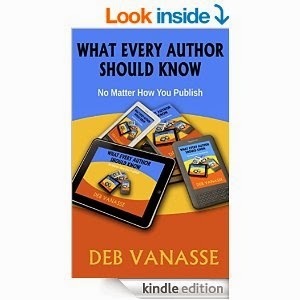 One reason first pages matter: the "look inside" feature
One reason first pages matter: the "look inside" featureNo matter how you publish, first pages are crucial. From reading the first five to ten pages (sometimes even your first page or two), your readers—including agents and editors, if you’re going that route—are going to decide whether your book is worth their time, money, and attention. Online book vendors know this; that’s why they offer the “look inside” feature on a book’s “buy” page. You may think all this attention on beginnings is unfair. You’ve got a great narrative (either fiction or nonfiction). Lots of twists and turns. Unique characters. Readers can’t tell all that from the first few pages. Sorry. They can, and they do. From time to time, I’m asked to jury a writing contest or award. The first round of eliminations is actually easier than you might think; from the first page or two, it’s generally clear whether the author is capable and whether the selection is captivating enough to warrant a closer look. While recognizing the importance of first pages is a crucial step towards making sure yours are a worthy representation of your book, it’s also paradoxically true that authors sometimes try so hard to impress in a book’s early pages that their efforts end up attention of all the wrong kinds. In attempting to make sure your first pages “grab the reader,” it’s easy to overdo, putting the reader off instead of drawing her in. In What Every Author Should Know , I’ve written about five common flaws of first pages: clichés, bad pacing, insufficient grounding, flat characters, and shoddy dialogue. But of course it’s not enough to avoid the mistakes. You want your first pages to shine with an organic sort of magic, creating a magnetic pull from which the reader is helpless to escape. Study the first five pages of a book you love. Make notes on how the author draws you into the book—the set-ups, the turns of phrase, the nuanced characters, the tension points that hint at the stakes. Then do the same with the first five pages of your own manuscript.Sometimes it’s tough to see your own flaws. Or you see them, but you’ve worked the material over so many times that you’re not sure how to improve. That’s when a good critique can be helpful. In conjunction with my upcoming 49 Writers Ready to Publish workshop, I’ll be doing a limited number of first pages critiques. Registrants who opt for the critique will receive instructions for submitting their first five pages in advance of the workshop. On each manuscript and also in a brief editorial letter, I’ll point out what’s working well, and I’ll offer suggestions for improving the parts that need work. During the lunch break and after the workshop is over, I’ll meet one-on-one with participants to discuss these critiques. If you’re not able to attend the Ready to Publish workshop on Feb. 7 in Anchorage but you’d still like a first pages critique from an experienced author and editor, check with me at debvanasse (at) gmail.com and, time permitting, we’ll see what can be arranged.
Co-founder of 49 Writers and founder of the independent authors cooperative Running Fox Books, Deb Vanasse has authored fifteen books. Her most recent are What Every Author Should Know, a comprehensive guide to book publishing and promotion, and Cold Spell, a novel that “captures the harsh beauty of the terrain as well as the strain of self-doubt and complicated family bonds,” according to Booklist. Deb lives and works as freelance editor and coach on Hiland Mountain outside of Anchorage, Alaska, and at a cabin near the Matanuska Glacier. A version of this post also ran at www.selfmadewriter.blogspot.com.
Published on January 20, 2015 07:00
January 13, 2015
Indie Publishing: Boom and Bust
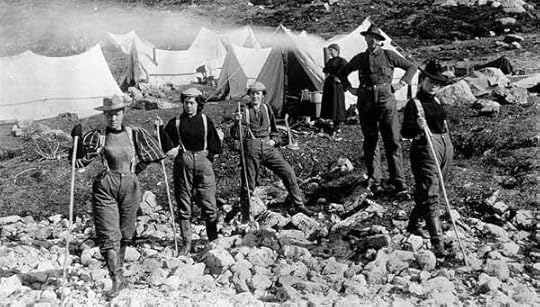
Kris Rusch wrote a few weeks ago that the gold rush is over in indie publishing; in fact, it’s been over for some time now.
There’s no surprise to many of us. Neither is it cause for panic (or jubilation, if you’ve thought the indie revolution was a bad thing). Busts follow booms. It’s the nature of things.
For a long, long time, I’ve made my home in Alaska, the state that has the most volatile economy in the nation, dependent as it is on the boom-bust development of resources like oil and gold. For a forthcoming book, I’ve also done a huge amount of research on the granddaddy of all booms, the 1898 Klondike Gold Rush. So it’s impossible to resist probing what the metaphor illustrates for authors, whether they’ve been publishing independently or watching from the sidelines:
· When the boom begins, the attraction is as much—maybe more—about independence and reward for hard work as it is about wealth. As with would-be and midlist authors who felt squeezed out of traditional publishing, most of the prospectors who came North felt squeezed out of opportunities within the dysfunctional economy of the 1890s.· Statistically speaking, by the time you hear about it, the so-called “easy money” is gone.For the most part, those who were already milling around in the vicinity of the Klondike when the first nuggets were found were the ones who made out well. By the time word reached everyone else, the best claims were all taken. The same has happened in indie publishing, where authors who jumped in early (2009-2011) found the biggest followings among readers. As with the miners, not all who did well were skilled; some were just lucky.· The volume of interest causes big problems. When a boom begins, there’s never enough infrastructure in place to deal with the influx. The sheer numbers complicate the situation for everyone. Confusion reigns. Sound familiar?· The resource has limits. No matter how many miners, there’s only so much gold. For books, there are only so many readers, and those readers have only so much time to read. · When the reality hits, most quit. With a lot of grumbling and excuses over what went wrong, some move on to the next big rush—from the Klondike, it was Nome; from indie e-books, who knows? Others will give up completely.· Aside from those who arrived early on, the ones who do best are those who “mine the miners.” Though the good Klondike claims were gone early, the entrepreneurs who set up shop to feed and house the miners (and keep them in liquor) did just fine. Some even hung around after the rush was over. In indie publishing, those who market services to authors trying to figure out how to promote their books will in many cases do better than the authors themselves.· When the rush ends, nothing’s as it once was. Klondikers tore through the landscape and created havoc among indigenous cultures. Post-boom, publishing has also changed in ways we’re still trying to figure out.· Despite the hardships and challenges, a certain percentage of those who came for the opportunities will stay because they like this new way of life. As with those who settled in the north, indie authors are here to stay—wiser for their troubles, better focused than they might have been, and content with the new landscape.
Published on January 13, 2015 07:00
January 6, 2015
Hall of Shame: Don’t Make These Book Marketing Mistakes
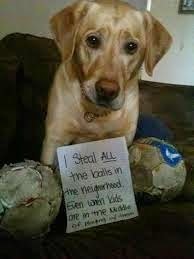
Inspired by Doggy Hall of Shame, I decided to blast right into 2015 with my own Book Marketing Hall of Shame. Sadly, I’m pretty sure this list represents only a fraction of the bad promotional moves authors make (can you say “desperation”?). Please, don’t every let me catch you doing any of these things:
· The unwanted “gift”: A few weeks ago, an author I’ve never met emailed me a promotional code to his book. Six days later, he followed up with this message: It appears you are not going to redeem the iBooks store promo code I sent to you. Apple issues a limited number and each has a lifespan of only four weeks and then expires forever, so I am resending yours to Cat Channel to begin my effort to drum up some publicity for Christmas Season 2015. If you should ever decide you want to become part of the millions who will yet read this book, just let me know and I will check out another from of [sic] my quota of codes and send to you. Let’s start with the obvious: Don’t dump your books on people who aren’t interested in them. Don’t chide strangers for not using a “gift” they never asked for in the first place. And please. The millions who will yet read this book? Dear me.· The spam blog comment: Recently, Mr. Z.H. left a comment on one of my blog posts: a linked title to a book, along with this book description: Author [name deleted, for obvious reasons] shares his triumphs and trials and experiences as an entrepreneur, car dealer, statesman, father and husband of 25 years and teaches us how to do more with less during tough times. He teaches how to leverage, barter, negotiate & stretch your dollar. These tips and tricks can pay big dividends throughout a lifetime. Dear Mr. Author (and your hired lackey, Z.H.), let me tell you what does notpay big dividends: spamming another author’s website.· The false friend: One of my (real) friends got so fed up with over-zealous promotion on social media that she made this pronouncement: As a published author and current writer-editor who used to work at a publishing house, I am a very strong advocate for books and authors. However, when someone becomes a FB friend and immediately begins marketing their latest book and posting their book trailer and more on my timeline, I'm going to delete it and unfriend you. Here’s the deal, authors: It’s great to share your book news with your real friends. But be prudent. Think of how it looks on the receiving end, especially on Facebook where it’s tough to figure out why particular posts end up on our timelines. Facebook, by the way, is reportedly cracking down on posts that do nothing but push people to buy a product. · The fake review: Online vendors do their best to target fake reviews and take them down, but judging from some of the adverts on fiverr (“fast glowing review,” “I will post a verified book review in 24 hours,” “positive verified review very fast”), the bogus review industry is still alive and well. Don’t feed it.
Co-founder of 49 Writers and founder of the independent authors cooperative Running Fox Books, Deb Vanasse has authored fifteen books. Her most recent are What Every Author Should Know, a comprehensive guide to book publishing and promotion, and Cold Spell, a novel that “captures the harsh beauty of the terrain as well as the strain of self-doubt and complicated family bonds,” according to Booklist.
Published on January 06, 2015 07:00
December 30, 2014
Publishing 2015: Forecast from the Trenches

I’ll begin with the same disclaimers as last year: I have no crystal ball. I’m not clairvoyant. And I live in Alaska, pretty much as far as a writer can get from the Right Coast publishing industry without needing a passport. But I’ve published several books in a variety of ways—mostly traditional, but also independently and in hybrid arrangements. And I try to keep up where I can, believing that the view from the trenches is sometimes the clearest.
So, from here in my mountainside office, where fingers meet the keyboard, I offer my for-what-they’re-worth thoughts on trends in publishing for 2015:
· Amazon still rules—and they’re changing the rules: Traditional publishers don’t like Amazon making the rules, especially when it comes to e-book pricing. Now indie authors are complaining too. Quoted in a recent New York Times article, one author complains that Amazon is “recreating that whole unfair bogus system where they make the money and we authors survive on the pennies that are left.” News flash: Amazon has always been in this for the money. A specific indie author complaint has to do with Kindle Unlimited, a new (in 2014) subscription program that features only title by authors enrolled in the KDP Select (Amazon-exclusive) option. KU titles get more visibility than others on Amazon, but the payment per download is less, sometimes substantially, than it is for straight royalty sales. (For details, see the most recent Author Earnings Report.)· As an author, the numbers aren’t in your favor: Simple math demonstrates that it’s not only the KU effect that’s causing indie author income to slide. There’s also way more inventory than ever before, partly because books no longer go out of print. By the numbers: In 2010, there were 600,000 Kindle e-books; four years later, there were 3 million. The net result is that it’s exponentially more difficult for new work to get noticed, no matter how you publish. · There are new gates: As evidenced by the recent kerfuffle between Kindle Direct and an author over the number of hyphens in his book, Amazon is increasing its efforts to make sure the book products it sells (yes, dear author, you are a supplier, nothing more) have some quality. Amazon also promotes book from its own imprints over other titles, and some of its most lucrative categories, such as Amazon Short Reads, are by invitation only. Amazon's not the only game in town, I know, but their domination of the market continues (see "Amazon rules" above).· Entrepreneurial fatigue will have a natural winnowing effect: In traditional publishing, there has always been a hefty attrition rate involving those who want to be published but get discouraged before the right combination of talent, luck, and determination gets them through the gates. That same fatigue will permeate the ranks of indie authors as well. In the end, those with a combination of perseverance and proper motivation (read: not solely for money) will remain, easing the numbers problem a bit.· The author services boom will moderate: One of my forthcoming books deals with the Klondike gold rush, so I speak with some authority on this: there’s always lots of money to be made “mining the miners.” A similar phenomenon occurred with the indie publishing revolution, in the form of all sorts of author services companies. Already some are going by the proverbial wayside as authors grow weary of dishing out lots of cash and getting little back in terms of sales.· Pricing will level off, with lower per-book returns for the author: A few years back, indie authors could increase their visibility with aggressive pricing. Now, KDP only allows free e-books for five days out of every ninety, and then only for titles enrolled in Kindle Select. 99 cents may be the new free, but readers aren’t as excited about 99 cent books. At the same time, there’s a glut of newsletters alerting readers to discounted titles, diluting the effect even as more and more of them require authors to pay for their listings. Adding to the bottom-line woes of independently published authors: traditional publishers are discounting their e-books more than ever before, offsetting to a certain extent one marketing advantage indies once enjoyed.· In this settling-out period, traditional publishers will continue to take few risks:Modest advances will continue to be offered, even for some authors who used to get big ones. The midlist author will continue to get squeezed out—and almost every author ends up at midlist eventually.· When it comes to discoverability and visibility, there’s no gaming the system: In the beginning (circa 2009-2011), there were tricks indie authors used to get their books noticed, especially on Amazon. Reality is starting to settle in; see the first bullet point about Amazon making the rules.· Readers want to be able to trust what they’re getting: Especially in children’s books, literary fiction, and nonfiction (except self-help), readers want to know that the books they’re getting are actually good, so even if they read on e-devices, they discover books in much the same ways they always have, with online reader reviews as a means of reinforcing their buying decisions.
Though this may all sound discouraging, it’s in fact nothing more than a natural correction in the marketplace, similar to what went on when the music industry went digital. As with musicians, the authors who make it will be those whose primary motivation is passion, tempered with enough good business sense to diversify their incomes from related enterprises that reinforce their branding.
Overall, it’s still an exciting time to be an author. Revel in what you can control: the joy of the creative process; the marvel that you—yes, you—can write and publish a book. Just don’t set yourself up for failure. Now more than ever, you need to educate yourself on your options in publishing and decide what’s best for you and your book.
Published on December 30, 2014 07:00
December 23, 2014
A Writer's Best Gift: We Have Faith in You!

For years, the reading of Harper Lee's "Christmas to Me" has been a holiday tradition for me. In this brief essay, Lee tells of a precious gift she received one long-ago Christmas, a gift any writer would cherish, a gift that in turn reached beyond one aspiring writer to millions of readers, in the form of Lee's classic novel, To Kill a Mockingbird.
Happy reading, and warmest holiday wishes to you and yours!
Published on December 23, 2014 07:00
December 16, 2014
The Writer's Brain - and Heart
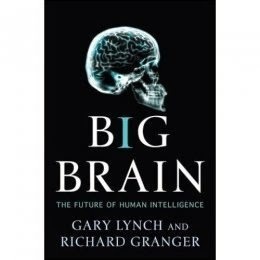
Not long ago, I took a writerly side trip. You know how it goes. You’re getting back to your novel after a few too many days away for celebrations and family and a whole lot of other things that matter a lot, plus a few that only matter a little but still manage to snag your time, and you’re trying to get into the swing of your narrative because you know if you get to a certain spot you’ll be truly engaged and the story will carry you off the way you hope it will carry your future readers, but that spot teases and hides till you reach a little epiphany: it’s time for some research.
I won’t go into how and why I ended up researching prehistoric humanoids with over-sized brains, but it did get me thinking, not only about how to use the information in my story but how much nicer it might be if writers had the generous 25% bonus brain of a Boskop.
I stumbled on the Boskops in an excerpt from the book Big Brain
 by Gary Lynch and Richard Granger, reprinted in the December 28, 2009 issue of Discover magazine. These neuroscientists believe that skulls unearthed in Boskop, South Africa in 1913 come from a giant-brained group that flickered, sputtered, and died off approximately 10,000 years ago.
by Gary Lynch and Richard Granger, reprinted in the December 28, 2009 issue of Discover magazine. These neuroscientists believe that skulls unearthed in Boskop, South Africa in 1913 come from a giant-brained group that flickered, sputtered, and died off approximately 10,000 years ago.Lynch and Granger contend that in relation to their large cranial capacity, the Boskops had small, childlike facial features reminiscent of…well, maybe you've caught one of those Twilight Zone marathons?
Extrapolating on potential brain capacity, the authors believe these hominids may have boasted IQs averaging 150 and stretching to 180, not to mention an “inconceivably large” frontal cortex.
“While your own prefrontal area might link a sequence of visual material to form an episodic memory,” they write, “the Boskop may have added additional material from sounds, smells, and so on. Where your memory of a walk down a Parisian street may include the mental visual image of the street vendor, the bistro, and the charming little church, the Boskop may also have had the music coming from the bistro, the conversations from other strollers, and the peculiar window over the door of the church.”
The Boskops were a tad pre-Paris, but you get the idea. Higher IQ, heightened sensory memory. If only we writers had Boskop brains. Then there’s this:
“Longer brain pathways lead to larger and deeper memory hierarchies. These confer a greater ability to examine and discard more blind alleys, to see more consequences of a plan before enacting it. In general this enables us to think things through. If Boskops had longer chains of cortical networks—longer mental assembly lines—they would have created longer and more complex classification chains. When they looked down a road as far as they could, before choosing a path, they would have seen farther than we can: more potential outcomes, more possible downstream costs and benefits.”
If writers got three wishes, surely this would one: to imagine more deeply, while knowing the narrative costs of following one thread over another.
But there’s a downside to this super-sized thinking. Lynch and Granger speculate that aside from the difficulty of birthing large-headed babies, the Boskops may have been overwhelmed by their own potential and frustrated by their inability to make good on it. And there is that little extinction problem.
More important than wishing for long-lost genes is doing the best with what you’ve got, the way . pharmaceutical heiress Ruth Lilly did. An aspiring poet, Lilly attempted but never achieved publication in Poetry magazine. Undaunted, she applauded the positive tone of her rejections and, in 2002, donated $100 million to further the magazine’s mission of advancing poetry.
The Boskops may have us beat when it comes to brains, but our hearts – well, that’s another matter altogether. In this season of giving, consider the many ways you can open your hearts to others within the literary community. Recommend books you love; every author appreciates sincere word-of-mouth praise. Mentor an emerging writer. Donate your time, talents, and cash to a literary nonprofit like 49 Writers. Attend readings, signings, and other literary events. Support the innovative efforts of other writers on crowdsourcing sites, in journals, and on blogs.
When you finish a book, take a minute to leave your thoughts at online sites like Goodreads and Amazon. You’ll be giving the gift of social proof while helping readers find books they’ll enjoy. Like, comment, and share. Email writers to let them know you enjoyed their books. The few minutes you take to write your email will multiply into days (if not weeks) of encouragement for the author.
Just yesterday I received this from a reader:
That book blew me away! Thank you for it. Write more. Soon. I'm greedy . . . At this point I'm a raging fan!
Sent from an iPhone, the note took only seconds to write. But what a gift. Never mind the size of my brain; my heart is warmed beyond compare.
Published on December 16, 2014 07:00
December 9, 2014
The Trouble with Speed Writing

Back in the 70’s, the craze was speed-reading. Now it’s speed-writing, with authors churning out book after book at lightning speed.
They’re only words, right?
Here’s the thing: readers have access to all the words they want, for free, on the internet. They don’t need your book or mine. Not unless it’s truly worth reading.
Don’t get me wrong. I’m all about fluency—pushing through to the end of a crappy first draft, so you can see what you’ve got. Too much deliberation along the way, and you risk writer’s block. That’s why initiatives like NaNoWriMo, spurring writers to complete a novel draft in a month, make good sense.
To complete a book-length draft is no small achievement. But keep in mind that in the glow of your accomplishment, your draft will look better than it really is. Don’t be fooled. Don’t circulate it prematurely among agents and editors. Don’t hit that “publish” button too soon.
Particularly in the self-published e-book market, some authors are churning out book after book, each one completed in only a matter of weeks. A few have even found readers, some in substantial numbers. But if you look closely, you’ll see that most successful of these speed-writers first hit the market during a unique moment in publishing history, roughly between 2009 and 2011, when readers (of genre fiction, primarily) were just discovering how much bang they could get for their e-book bucks.
That era is already fading fast in the rear view. The authors who found their followings during those golden years continue to speed-write for their loyal readers, with decent though moderated success. These days there are exponentially more e-books to choose from, allowing readers to be a lot more discerning, quick to slam those with weak plots and flat characters and typos on every other page.
Traditional publishers sometimes push authors to speed-write, too, especially when the topic is timely and they want the book out right now. It's called "crashing a book." Too many crashes, and your writing looks pretty ugly.
Pace yourself. With ten years between books, Pulitzer Prize-winning author Donna Tartt is proof that readers will wait.
Get it right, because books are forever.
Published on December 09, 2014 07:00
December 2, 2014
Tips for the Successful Author: Flexibility

If you’re an author, you already know the importance of discipline: stick with your project and one day you’ll finish. And if you participated in NaNoWriMo, you know you can hit that finish line a lot more quickly than you’d ever imagined.
Now what?
First, you figure out whether your book is ready for market. If it’s a first draft, odds are that it’s not—not yet, anyhow. That’s where flexibility comes in.
When I first began publishing, I coveted the qualities of a real writer: persistence, diligence, tenaciousness, enthusiasm, confidence, humility, patience, and, of course, a thick skin. But flexibility was one trait no one said much about, and I believe it’s among the most vital.
I don’t only mean “kill your darlings,” though that’s great advice. Neither do I mean staying on your feet as the revolving doors of publishing present changes in staffing, distribution, and marketing, not to mention ever-increasing ways to publish. I’m talking about the kind of flexibility that allows you to rethink, rework, and even start over on a project, whether you’ve written 100 words or 100,000.
It’s possible that I appreciate flexibility because I’m not especially good at getting things right the first time. But not long ago, I completed a series of revisions on a novel that is, save the title, unrecognizable from its earliest versions. As I look back on the journey, I’m glad I stayed flexible throughout the process. It made all the difference in the end result.
Commenting on his process in writing “Mrs. Kelly’s Monster,” a terrific essay anthologized in Literary Non-Fiction , Jon Franklin affirms the value of flexibility. He began the project as one in a series of “practice pieces” in which he applied the Chekhovian story form to journalism. In particular, he wanted to do something highly paced. Since he’d already earned a reputation as a science writer for the Baltimore Sun, he was able to follow Dr. Thomas Decker into brain surgery. But on this particular day, Dr. Decker wasn’t the hero Franklin was expecting to write about. His patient died.
“I had somehow assumed that the operation would work out okay and have a happy ending,” Franklin says. “Now I had this terrible feeling that I had lost my story. It was an awful day. Here a woman had died and I was feeling sorry for myself because I didn’t have a story and, yet, that’s how I felt. I went over it and over it, and it wasn’t until seven or eight that evening that I realized I did have a story. It was just different than I thought. It was, in fact, a better story, one in which Dr. Ducker, not Mrs. Kelly, was the protagonist. Of all the lessons I learned on that story, the most powerful was that stories change…and a good writer lets them…When a story changes on you, always let go of your hypotheses and follow the story. What you find will be much better than what you abandoned.”
Profiled by Kevin Nance in Poets & Writers, fiction writerBen Fountain tells how he learned a similar lesson about flexibility. Two years after his 2006 prizewinning story collection Brief Encounters with Che Guevera was published, Fountain’s editor turned down the novel he’d been working on for ten years. The editor didn’t suggest a revision—Fountain had already done several. He advised him to scrap it.
As you might imagine, this came as a big blow to Fountain. Although six weeks earlier Malcolm Gladwell had called him “a genius-level literary autodidact with unlimited promise,” there was the small fact that he’d been writing for two decades and had only the one published story collection. After the editor’s rejection of his novel, Fountain says he went through all the stages of grief, from denial through depression, before he landed on acceptance. He decided he had other things to write. A few weeks later he started a short story that became the novel Billy Lynn’s Long Halftime Walk, released with a blurb from Madison Smartt Bell that says it’s “as close to the Great American Novel as anyone is likely to come these days”; Fountain’s novel went on to win the National Book Critics Circle Award.
Here’s the thing about Fountain: he never gave up. He proved himself tenacious and persistent in the long haul, while with individual projects, he learned what to believe in and when to let go. In a word, he proved flexible.
When you’re flexible, it’s easier to be objective about your work. It’s easier to avoid the mistake of trying to publish too soon, when your book is half-formed. It’s easier to understand which rejections are happening because the book isn’t ready and which are happening because you haven’t found the right agents (or readers) who love the book the way you do.
Published on December 02, 2014 07:00
November 25, 2014
Indies First: Authors and Booksellers
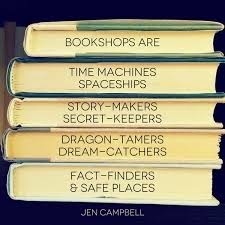
I know, I know. The holidays are coming up way too fast. It's the season of gratitude, and yet your mind is all caught up in that holiday gift-giving extravaganza that begins...well, let's not go there.
This year, how about mixing it up, gratitude with gift list, by showing some love to your favorite independent bookshop? On Saturday, Nov. 29, Indies First brings authors into local bookstores to help hand-sell books. I'm excited to be joining Eowyn Ivey and Don Rearden, playing bookseller at Fireside Books in Palmer, Alaska.
Saturday is the second annual Indies First celebration, an effort launched by bestselling author Sherman Alexie and taken up by the American Booksellers Association. The plan, as Alexie explains it:"We book nerds will become booksellers. We will make recommendations. We will practice nepotism and urge readers to buy multiple copies of our friends' books...I think the collective results could be mind-boggling (maybe even world-changing)...What could be better than spending a day hanging out in your favorite hometown indie, hand-selling books you love to people who will love them too and signing a stack of your own?"
I'm with Alexie - not much could be better. Indies First plays right into one of my secret but (usually) suppressed urges: to tug the sleeves of strangers whenever I spot titles I love on the shelves of a bookstore.
So mark your calendars and devote a portion of Small Business Saturday to visiting one of those great little bookshops where there's a lot more going on than just monetary transactions. And if you're in the Anchorage area, head on over to Palmer to Fireside Books. Eowyn, Don, and I would love to see you!
Published on November 25, 2014 07:00
November 11, 2014
The Bounce: How Smart Authors Handle Rejection
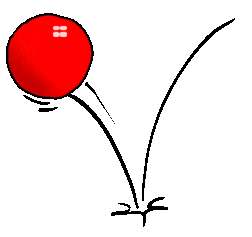
Some call it resilience, but I think that’s too nice a word, too easy. I prefer bounce, because it often comes with a smack, and the whole game can ride on which way it lands.
I’m talking about how writers respond to criticism, and how this relates to our overall success, which directly connects to how willing we are to fail. Writers aren’t so different from students in this regard. It doesn’t take much time in a classroom to realize that some students will never try very hard to succeed, and while there may be many explanations for this phenomenon, among the most fundamental is that if you don’t try, you won’t fail. In other words, you won’t need bounce.
Like a basketball, a writer must be pumped full to bounce back from criticism. Full of what, you ask? Some will say ego, but ego is unreliable and quickly deflated. Bounce is what you need, a blend of confidence and strategy.
If the book in your head is always better than the one that gets on the page, how much better is the book no one ever reads? Except that’s not the goal, at least not for most projects. At some point your book must meet its readers, and that’s where you’d best be ready with the bounce: when early readers don’t like it, when reviews are lackluster, when even your mother doesn’t seem impressed, when your sales figures are an embarrassment.
At its core, the bounce is a state of mind. When teaching revision, I often direct writers in a process I call “Potholes and Spine,” a variation on an exercise I learned in Now Write, edited by Sherry Ellis. Part of the process involves looking hard at the places that aren’t working in a piece and recognizing that each one is a gift, an opening where you are able to go in and tinker around with the assurance that you’re zeroing in on an important spot, because in most cases the messy parts are messy because you’re trying hard to articulate something that matters.
The other part of the bounce involves set-up and reaction. Let’s say you share a chapter from a nonfiction project with your writers’ group, or with other early readers. Two of them misunderstand what you’ve written. Another objects to your use of present tense, which you thought was strategic. You duly note these objections, writing them down the way you record all reactions from first readers—without responding or defending your work. It’s a great way to distance yourself, to avoid jumping in and explaining or justifying what you’ve got on the page. Still, it doesn’t squelch all the internal dialogue you’re having with your writer self: these people just don’t get it.
Thankfully, another reader likes the chapter, a lot—no bounce required. Then your four writer friends launch into a lively discussion over whether you should have included speculative language that allows for scene-making in nonfiction: this character might have done this, or perhaps she would have done that. Or maybe you should have stuck to one point of view. Maybe the whole project should be redone as historical fiction, not nonfiction at all. These are all approaches you’ve considered and rejected, but you write them all down, because—guess what—sometimes you’re wrong. When they’re done, you thank them and gather up their written critiques.
One person. One person liked your chapter. The rest, not so much.
Even as you sum this up in your head, you know it isn’t an accurate rendering. That’s where a good night’s rest—maybe a good week’s or even a month’s rest, if necessary—is critical.
The next part of the bounce, perhaps the most crucial, is figuring out what to do with the hodgepodge of reactions you’ve gathered. Your first readers are also writers, creative thinkers who’ll open a lot of lovely little doors to you. You can’t walk through them all. You can’t do everything they say, and you shouldn’t. But since you wrote down all their ideas, you go through them, one by one. You make a master list that includes even those items you’re certain you don’t want to change, so you can study it all on the page.
At this point in the bounce you go back and do a little reading in aspirational books, ones that line up nicely with what you hope your book will one day be. Regardless of the nuts and bolts of your first readers’ comments, at this point you especially rethink the voice—what makes yours as captivating, at least in places, as the voice in books you admire.
Then you review that summary list of comments again and consider what’s behind each of them. Everything is laid out and up for grabs. Often one concern masks another. The objection about tense, you realize, has more to do with choppiness, a real concern you’ve been glossing over in the draft. You also consider why you made certain decisions in the first place and whether that reasoning still holds.
You know you’ve bounced when you realize it won’t hurt to rewrite with some changes, even and especially big ones, and when you find yourself getting excited to discover how those changes might sound and feel. Then you thrash around in the muck that is your manuscript and, by some miracle, it starts to get better, though in the end you may not be able to explain exactly how or why.
That, my friends, is the bounce.
Rejection isn’t so much the cross you bear as the uniform you wear, that dorky little hat or crazy vest or pointy shoes or whatever you symbolically put on each day to say look at me, I’m a writer, a real one. Then your readers know they don’t have to pussyfoot around with their remarks: you’re a real writer and you know how to bounce.
Published on November 11, 2014 08:00
Book Birthday!
Happy Birthday to my latest book, https://www.goodreads.com/book/show/5...! Thanks to West Margin Press for bringing it into the world and to authors C.B Bernard, Bill Streever, Gary Krist, Caroline V
Happy Birthday to my latest book, https://www.goodreads.com/book/show/5...! Thanks to West Margin Press for bringing it into the world and to authors C.B Bernard, Bill Streever, Gary Krist, Caroline Van Hemert, and Kim Heacox for their endorsements!
...more
- Deb Vanasse's profile
- 39 followers



